SOURCE: RAUNAK KUNDE / NEWS BEAT / IDRW.ORG


After successfully securing a contract in 2022 for 2 40 mm naval gun systems, Larsen & Toubro (L&T), one of India’s leading defence manufacturers, is set to deepen its collaboration with the Indonesian Navy. Indonesia has decided to procure additional units of the ‘Teevra 40’ naval gun systems for its warships, marking a significant expansion of defence ties between the two nations.
The Teevra 40, developed by L&T, is a modern naval gun system that has become a cornerstone in the Indian Navy’s arsenal, now gaining traction internationally.
Continue readingSOURCE: RAUNAK KUNDE / NEWS BEAT / IDRW.ORG
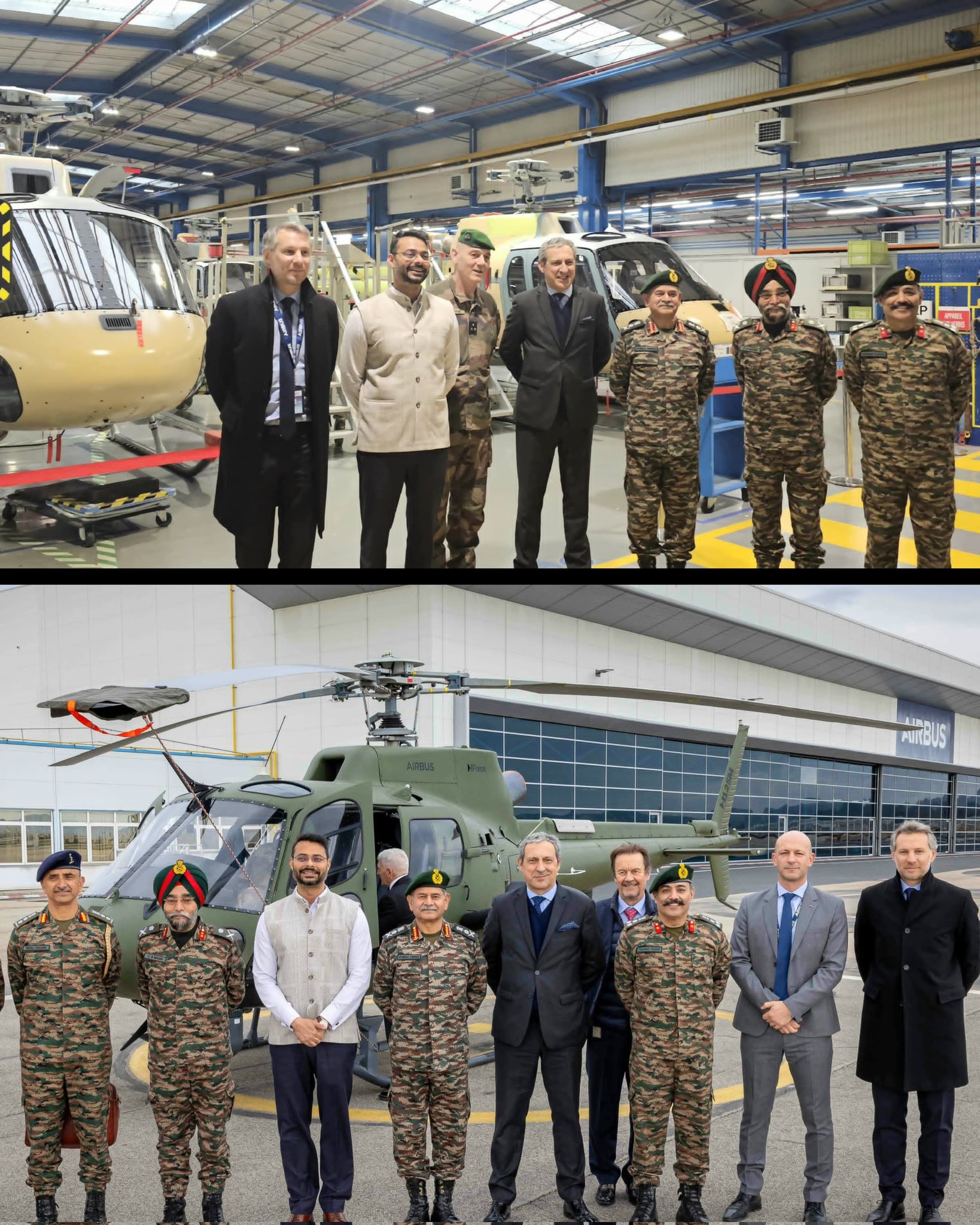

In a significant development for India’s defense aviation sector, Airbus is positioning itself to capitalize on the stalled negotiations between India and Russia over the procurement of nearly 200 Kamov Ka-226 helicopters. The European aerospace giant is keen to offer its H125 helicopter, tailored specifically to meet the Indian Army’s requirements, as an alternative to the Russian deal that has been languishing for years.
The Indian Army and Indian Air Force have a combined requirement for approximately 400 light-class helicopters to bolster their operational capabilities. This demand was originally split into two major procurement plans. The first involved acquiring 200 twin-engined Kamov Ka-226 helicopters from Russia, with local assembly to be undertaken by Hindustan Aeronautics Limited (HAL) under a government-to-government agreement. The second plan aimed at procuring 200 indigenously developed single-engine Light Utility Helicopters (LUH) from HAL. Both helicopter types were slated for production at HAL’s facility near Tumakuru, Karnataka, as part of India’s push for self-reliance in defense manufacturing.
Continue readingSOURCE: AFI
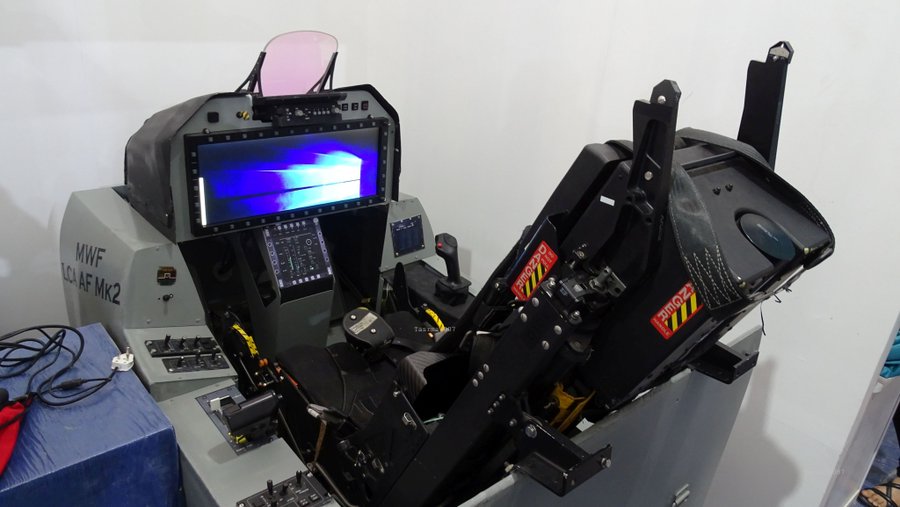

In a significant boost to India’s indigenous fighter jet programs, Bengaluru-based Southern Electronics has developed an advanced side-mounted pilot control grip, engineered to enhance pilot performance and comfort. This cutting-edge system, tailored for the Tejas MkII (Medium Weight Fighter) and slated for integration into the Advanced Medium Combat Aircraft (AMCA), has cleared rigorous evaluations by test pilots and received approval for production.
The company recently confirmed to industry sources that it has secured orders from Hindustan Aeronautics Limited (HAL), with deliveries expected soon for integration into the Tejas MkII prototype currently under manufacturing. This development underscores India’s growing expertise in aerospace ergonomics and its commitment to self-reliance under the Atmanirbhar Bharat initiative.
Continue readingSOURCE: AFI


In a thought-provoking column, Sameer Joshi, founder of NewSpace Research & Technologies Pvt Ltd, has spotlighted the transformative potential of Collaborative Combat Aircraft (CCA)—a paradigm shift poised to reshape modern air combat over the coming decades. As nations race to maintain air superiority in increasingly contested skies, CCAs promise to blend human ingenuity with AI-driven robotic assets, offering early adopters a decisive edge. For India, grappling with shrinking fighter squadrons and sophisticated Anti-Access/Area Denial (A2/AD) threats from China and Pakistan, this “system of systems” philosophy could herald a new era of affordable, decentralized combat mass. Joshi’s analysis, published on Medium, underscores how CCAs could redefine the Indian Air Force (IAF), amplifying its lethality, survivability, and strategic reach in the fight for command of the skies.
At its core, the CCA concept pairs human pilots with uncrewed, AI-enabled wingmen, harnessing cutting-edge technologies to outpace adversaries. Joshi envisions a future where pilots command swarms of CCAs to scout ahead, jam enemy radars, or strike targets—keeping manned jets like the Tejas, Su-30 MKI, or Rafale out of harm’s way while focusing on high-level decision-making. This collaborative approach departs from today’s reliance on “exquisite, expensive, and scarce” 4th, 4.5th, and 5th-generation platforms, which are ill-suited to penetrate layered A2/AD defenses without risking unsustainable losses.
Continue readingSOURCE: AFI


The Indian Army is poised to revolutionize its operational capabilities across the northern and northeastern sectors with the imminent induction of the Xploder, a remotely operated unmanned ground vehicle (UGV) developed in-house by Major Rajprasad of the 7 Engineer Regiment. Following rigorous trials over the past two years, this all-terrain platform has met the force’s stringent requirements and is now set for mass production by a private industry partner. “Hundreds of these units will be inducted into infantry, Special Forces, and Corps of Engineers units within the next few months for counter-insurgency and counter-terrorism operations,” Major Rajprasad announced, heralding a new era of technological preparedness.
The Xploder UGV emerges as a direct response to a persistent threat plaguing the Indian Army: improvised explosive devices (IEDs). “Over the decades, we’ve faced evolving IED challenges from terrorist groups. Many soldiers lost their lives, and a sizeable number were seriously injured during operations in forward areas,” Major Rajprasad explained. “This prompted me to work on a tangible solution to counter it.” The result is a versatile, battle-ready UGV designed to minimize human risk while maximizing tactical impact, a testament to the Army’s push for innovation under the “Aatmanirbhar Bharat” initiative.
Continue readingSOURCE: AFI


Major General (Retd) G.D. Bakshi, a prominent Indian military commentator, recently stirred debate by asserting that Russia’s Su-57 Felon, while not as stealthy as the U.S. F-35 Lightning II, surpasses China’s J-35A and J-20 fighters in overall capability. Speaking at a defense symposium in New Delhi in February 2025, Bakshi’s remarks challenge prevailing narratives around fifth-generation fighters, spotlighting the Su-57’s strengths—and its shortcomings—in the stealth race. As India weighs options like Russia’s Product 177S engine for its own programs, this assessment prompts a closer look at how these aircraft stack up in the contested skies of modern warfare.
The Lockheed Martin F-35A, with over 1,000 units delivered globally by 2025, is the gold standard for stealth. Its radar cross-section (RCS)—estimated at 0.001-0.005 square meters—owes much to its angular design, radar-absorbent materials (RAM), and internal weapons bays. The AN/APG-81 AESA radar and Distributed Aperture System (DAS) amplify its situational awareness, making it a “flying sensor” that evades detection while striking from beyond visual range (BVR). Bakshi’s concession that the Su-57 isn’t as stealthy aligns with expert consensus: the Felon’s RCS, pegged at 0.1-0.5 square meters, reflects compromises like exposed engine fans, riveted panels, and external weapon hardpoints in early models.
Continue readingSOURCE: IDRW.ORG
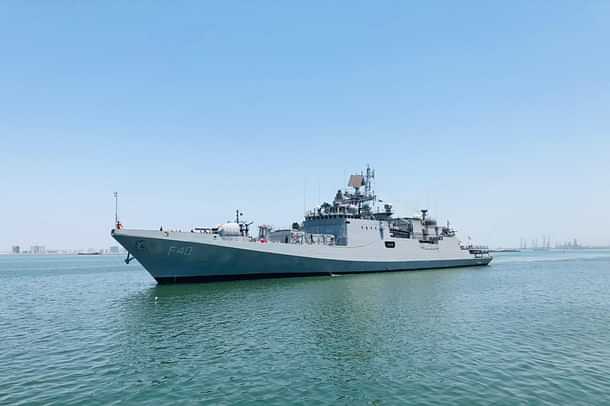

In a significant milestone for the Indian Navy, Tamal, the last warship India will import from abroad, is on track for commissioning in June 2025. This stealth frigate, currently under construction in Russia, marks the end of an era as India shifts toward complete self-reliance in warship design and production. As the commissioning date approaches, an Indian naval crew has already arrived in Russia to participate in a series of critical trials, ensuring the vessel is ready to join the fleet.
Tamal is the second of two stealth frigates being built in Russia under a $2.5 billion inter-governmental agreement signed with India in October 2016. The deal, part of Project 11356, includes four frigates: two constructed at the Yantar Shipyard in Kaliningrad, Russia (INS Tushil and Tamal), and two to be built domestically at Goa Shipyard Limited (GSL) with Russian technical assistance. The first Russian-built frigate, INS Tushil, was commissioned on December 9, 2024, in Kaliningrad, attended by Indian Defence Minister Rajnath Singh. Now, Tamal is poised to follow, closing the chapter on imported warships for the Indian Navy.
Continue readingSOURCE: IDRW.ORG


Recent developments suggest that India is poised to take a significant step toward enhancing its air defence capabilities through a potential partnership with Russia to produce the advanced Pantsir air defence missile-gun system locally. Commodore A Madhavarao (Retd.), Chairman and Managing Director of Bharat Dynamics Limited (BDL), confirmed to Sputnik India that discussions on local production are “going well,” marking a potential milestone in the decades-long defence collaboration between the two nations.
The prospect of India producing Russia’s Pantsir systems stems from a Memorandum of Understanding (MoU) signed in November 2024 between BDL and Russia’s state-owned Rosoboronexport. The agreement, signed during the 5th India-Russia Inter-Governmental Commission (IRIGC) subgroup meeting in Goa, laid the groundwork for cooperation on variants of the Pantsir, a mobile, short-range air defence system known for its versatility and effectiveness. The Pantsir-S1, in particular, combines missile and gun capabilities, making it a formidable tool against a range of aerial threats, including aircraft, drones, cruise missiles, and precision-guided munitions.
Continue readingSOURCE: AFI
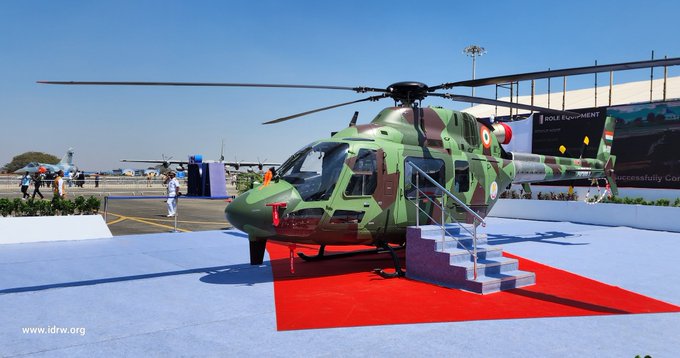

A crucial meeting scheduled for February 28 at Indian Army Headquarters in New Delhi could prove decisive for the future of the Light Utility Helicopter (LUH) program. Spearheaded by Hindustan Aeronautics Limited (HAL), the LUH is positioned as a modern, indigenous replacement for the Indian Army’s aging fleet of Cheetah and Chetak helicopters, which have served as lifelines in high-altitude and remote operations for decades. However, recent developments—including technical hiccups, safety concerns, and evolving Army requirements—suggest that the path forward for this ambitious program is anything but straightforward.
Designed by HAL’s Rotary Wing Research and Design Centre, the LUH is a 3-tonne-class helicopter intended to meet the Indian Armed Forces’ pressing need to phase out the obsolete Cheetah and Chetak platforms, many of which are over 30 years old and nearing the end of their technical life. With a maximum speed of 260 kmph, a service ceiling of 6.5 km, and a range of 350 km, the LUH promises enhanced performance in the rugged terrains of the Himalayas and other challenging environments. The helicopter’s glass cockpit, single Shakti engine, and crash-worthy design mark it as a significant upgrade, tailored for roles like troop transport, reconnaissance, and casualty evacuation.
Continue readingSOURCE: AFI


The prospect of India acquiring the Lockheed Martin F-35 Lightning II from the United States and Pakistan securing the Shenyang J-35A from China has sparked intense speculation about how these advanced stealth fighters might reshape air combat dynamics in South Asia. As fifth-generation platforms, both jets bring cutting-edge stealth, sensor fusion, and network-centric warfare capabilities to the table. Should both nations integrate these aircraft into their arsenals, a combat scenario between the Indian Air Force (IAF) and Pakistan Air Force (PAF) would hinge on technology, strategy, and the broader geopolitical context. Here’s how such a clash might unfold.
The F-35A, the conventional takeoff and landing variant India might pursue, is a proven multirole stealth fighter. With its AN/APG-81 AESA radar, Distributed Aperture System (DAS), and advanced electronic warfare suite, it excels in situational awareness and beyond-visual-range (BVR) engagements. Its stealth design reduces its radar cross-section (RCS), and its internal weapons bay can carry AIM-120 AMRAAMs or precision-guided munitions, maintaining its low-observable profile. Powered by a Pratt & Whitney F135 engine (43,000 lbf with afterburner), the F-35A boasts a combat radius of over 1,200 km and a top speed of Mach 1.6.
Continue readingSOURCE: AFI


Turkey’s ambitious Kaan fifth-generation fighter jet program has taken the aerospace world by storm, securing international partnerships after just two flights of what was essentially a ground engineering model. Meanwhile, India’s Advanced Medium Combat Aircraft (AMCA), poised for a full-fledged prototype flight by 2028, has yet to make similar diplomatic or commercial waves. This disparity raises questions about India’s export strategy for the AMCA—a jet that could fill a critical gap for nations unable to procure the U.S. F-35 or China’s J-35A—underscoring a missed opportunity to leverage its advanced indigenous technology on the global stage.
The Kaan, developed by Turkish Aerospace Industries (TAI), achieved its maiden flight in February 2024, followed by a second in December, marking Turkey’s entry into the elite fifth-generation club. Though these flights used a stripped-down prototype—lacking key Line Replaceable Units (LRUs) like radar, avionics, and weapons systems—Turkey wasted no time capitalizing on the milestone. By Aero India 2025, reports emerged of Azerbaijan, Pakistan, and Qatar expressing interest in joining the program, with Saudi Arabia and Indonesia also in talks for co-development or procurement. Turkey’s aggressive outreach, backed by a $20 billion investment and NATO-aligned credentials, has positioned the Kaan as an alternative for nations frozen out of the F-35 program due to politics (e.g., Turkey’s own S-400 purchase) or cost.
Continue readingSOURCE: AFI


China’s military support to Pakistan has long been a cornerstone of its strategy to keep India in check, creating a persistent thorn in New Delhi’s side along its western border. From advanced fighter jets to hypersonic missiles, Beijing has steadily equipped Islamabad with cutting-edge weaponry, leveraging their “all-weather” alliance to counterbalance India’s regional ambitions. Meanwhile, India, despite its growing defense industry and warming ties with Taiwan, has refrained from arming the island with Indian-made weapons—a move that could signal defiance to Beijing but has yet to materialize. This contrast highlights a tale of strategic intent versus missed opportunities.
China’s defense collaboration with Pakistan is both deep and deliberate. Over decades, Beijing has supplied Islamabad with an array of sophisticated platforms: the JF-17 Thunder fighter (co-developed with Pakistan), Type 054A/P frigates for the Pakistan Navy, and the HQ-9 air defense system, mirroring China’s own capabilities. In 2024, speculation intensified that China might transfer its DF-17 hypersonic missile—capable of speeds exceeding Mach 5 and a range of 2,500 km—to Pakistan. Such a weapon could challenge India’s S-400 air defense system, acquired from Russia in 2022, which has been touted as a game-changer against conventional threats but struggles with hypersonic targets.
Continue readingSOURCE: AFI
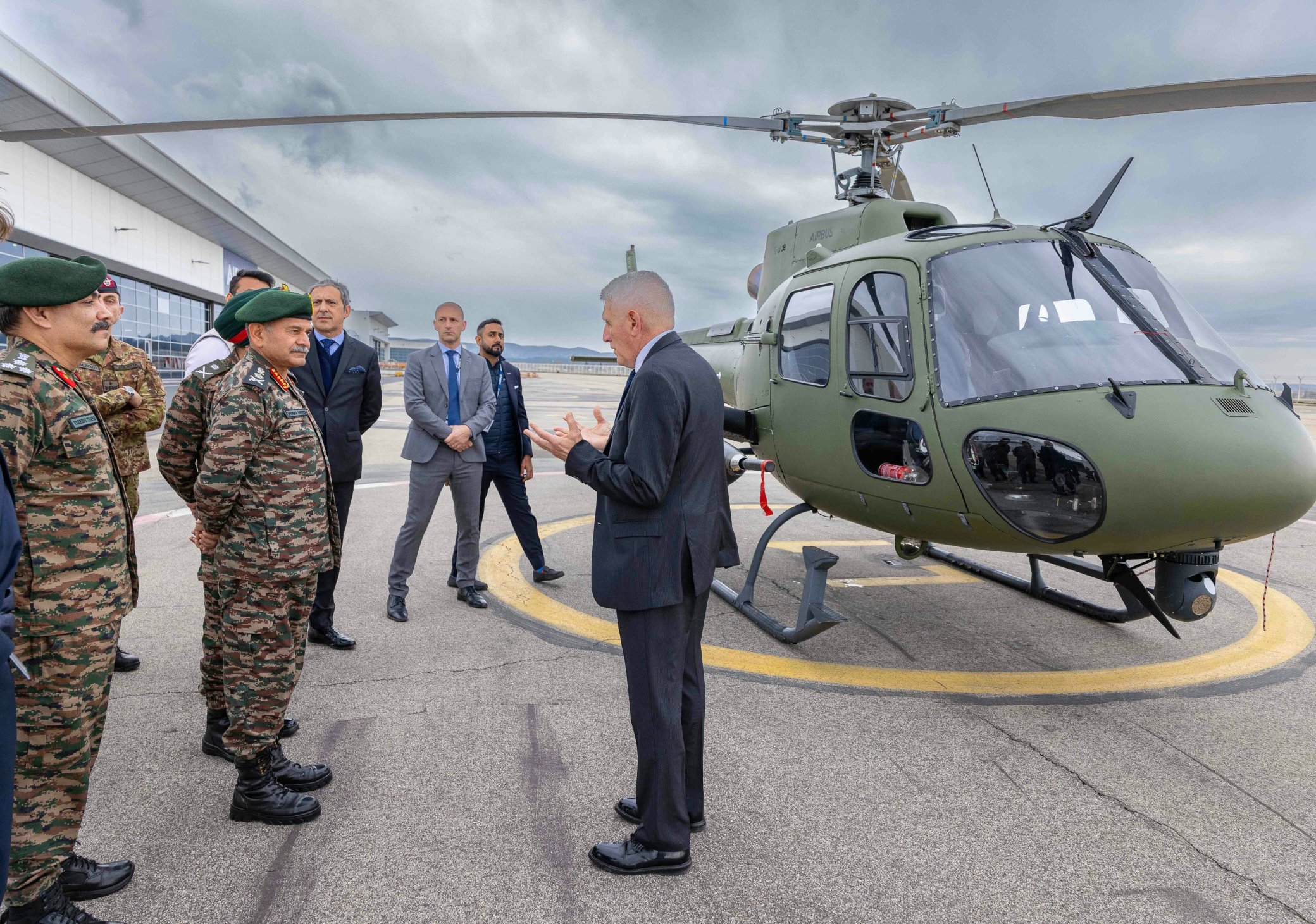

On February 26, 2025, General Upendra Dwivedi, Chief of the Army Staff (COAS) of the Indian Army, visited the Airbus facility in Marseille, France, reinforcing India’s commitment to integrating cutting-edge global aerospace technology into its defense ecosystem. During the visit, General Dwivedi was briefed on Airbus’s advancements in aviation technology, defense systems, and aerospace engineering, with a particular focus on rotary-wing aviation—an area of growing strategic importance for the Indian Army. The visit underscores the Army’s intent to enhance its operational capabilities and strengthen defense preparedness through collaboration with one of the world’s leading aerospace pioneers.
The Marseille facility, a hub for Airbus Helicopters, provided General Dwivedi with a firsthand look at the company’s state-of-the-art offerings. Airbus, a global leader in civil and military aviation, showcased its expertise in designing and manufacturing helicopters, defense systems, and advanced aerospace solutions. The COAS received detailed briefings on cutting-edge technologies, including lightweight composite materials, next-generation avionics, and hybrid propulsion systems that enhance performance, fuel efficiency, and survivability in combat environments.
Continue readingSOURCE: RAUNAK KUNDE / NEWS BEAT / IDRW.ORG


A former employee of India’s Gas Turbine Research Establishment (GTRE), speaking anonymously to idrw.org, has delivered a scathing assessment of ongoing negotiations with France for the joint development of a 110kN engine to power the Advanced Medium Combat Aircraft (AMCA). Likening the talks to “speaking to a dead wall,” the ex-official cautioned that France’s track record on Technology Transfer (ToT) casts serious doubts on its reliability as a partner, accusing French officials of overpromising and underdelivering in past engagements—a pattern that could jeopardize India’s fifth-generation fighter ambitions.
Drawing from firsthand experience, the official recounted an early 2010s effort to co-develop a hybrid engine combining India’s Kaveri with France’s Safran M88, used in the Rafale for the Tejas program. According to the source, the ToT offered by the French was “insignificant and low-tech,” confined to non-critical, peripheral components while Safran sought to retain Intellectual Property Rights (IPR) over the M88-2 engine’s core—the heart of its performance. “They wanted the majority of the core-section IPR to stay with them,” the official said, noting that GTRE was forced to abandon the talks due to this impasse. The lack of meaningful progress left a bitter taste, reinforcing skepticism about France’s willingness to share substantive technology.
Continue readingSOURCE: RAUNAK KUNDE / NEWS BEAT / IDRW.ORG


The Naval Science and Technological Laboratory (NSTL), a premier research facility under the Defence Research and Development Organisation (DRDO), has announced its next ambitious project: the development of a super-cavitation torpedo for the Indian Navy. This initiative comes on the heels of successfully concluding work on the Electronic Heavy Weight Torpedo (EHWT) designed for submarine operations.
Super-cavitation technology represents a quantum leap in underwater warfare, offering torpedoes the ability to travel at speeds previously unattainable through the creation of a gaseous envelope around the weapon. This reduces water friction, allowing for dramatically increased velocity, making these torpedoes harder to detect and counter.
Continue reading